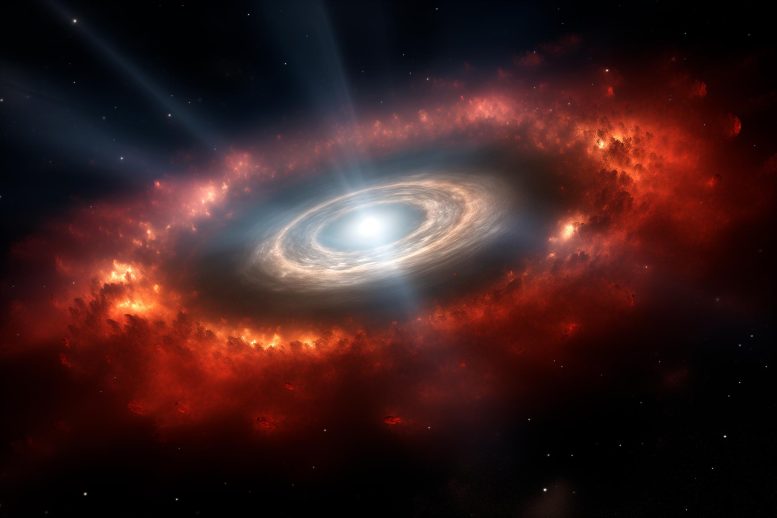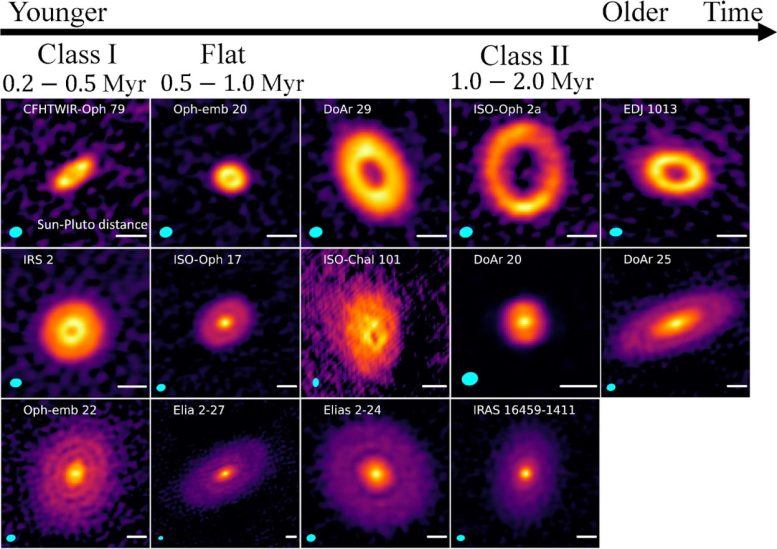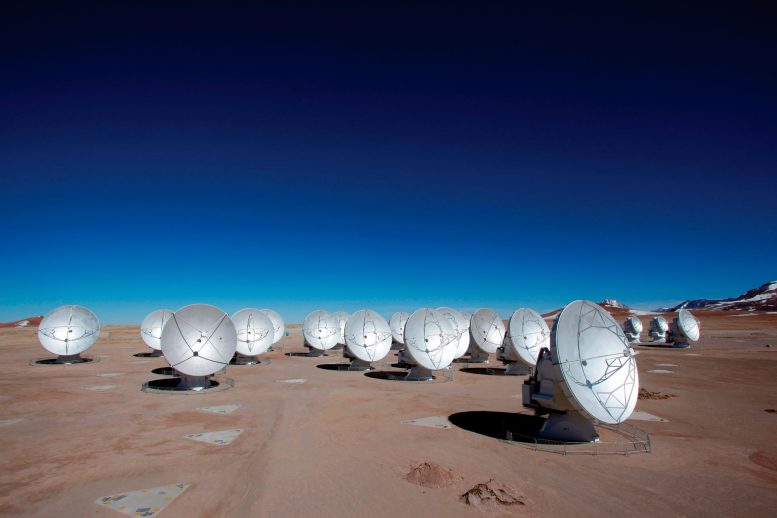
Astronomers have found early ring and spiral structures in young planetary disks, indicating that planet formation begins much earlier than previously thought. This groundbreaking discovery, revealed through ALMA data, challenges existing models of planet formation and suggests a much faster timeline for the emergence of planetary structures. (Artist’s concept.) Credit: SciTechDaily.com
Early Evolution of Planetary Disk Structures Seen for the First Time
Planet formation may occur much more rapidly than previously thought.
An international team of astronomers has found ring and spiral structures in very young planetary disks, demonstrating that planet formation may begin much earlier than once thought. The results were presented on Monday at the 243rd Meeting of the American Astronomical Society.
Using data from the National Radio Astronomy Observatory’s (NRAO) Atacama Large Millimeter/submillimeter Array (ALMA) the team captured images of Class 0 and Class I planetary disks, which are much younger than the Class II disks observed by earlier disk surveys. Class II disks are known to have gaps and ring structures, indicating that planetary formation is well underway. “ALMA’s early observations of young protoplanetary disks have revealed many beautiful rings and gaps, possible formation sites of planets,” said Cheng-Han Hsieh, PhD Candidate at Yale University, “I wondered when these rings and gaps started to appear in the disks.”

The evolutionary sequence of protoplanetary disks with substructures, from the ALMA CAMPOS survey. These wide varieties of planetary disk structures are possible formation sites for young protoplanets. Credit: Hsieh et al. in prep.
This new study shows that structure begins to form when the disks are about 300,000 years old, which is incredibly fast. Young disks can have multiple rings, and spiral structures, or evolve into a ring with a central cavity. These observations challenge our understanding of how planets form, particularly large Jupiter-like planets. “It is difficult to form giant planets within a million years from the core accretion model,” said Cheng-Han Hsieh. Future studies will pinpoint the exact time when the disk substructure appears and how that connects to early planet formation.

The Atacama Large Millimeter/submillimeter Array (ALMA) sits on the Chajnantor plains nearly 5,000 m above sea level and currently has 66 high-precision antennas working together at millimeter and submillimeter wavelengths. Credit: C. Padilla, NRAO/AUI/NSF
The Atacama Large Millimeter/submillimeter Array (ALMA) is a state-of-the-art telescope situated in the Atacama Desert of northern Chile. Operated by a partnership between Europe, North America, East Asia, and the host country Chile, ALMA specializes in studying light from some of the coldest objects in the Universe.
It operates at millimeter and submillimeter wavelengths, filling a crucial gap between infrared light and radio waves. This allows ALMA to observe phenomena such as the formation of stars, planetary systems, and the detailed chemistry of the universe, which are often obscured at other wavelengths.
ALMA’s high altitude and dry location provide an almost unparalleled view of the universe in these unique wavelengths, making it one of the most powerful and versatile observatories in the world for studying molecular gas and dust.
>>> Read full article>>>
Copyright for syndicated content belongs to the linked Source : SciTechDaily – https://scitechdaily.com/reimagining-planetary-genesis-young-disk-observations-challenge-formation-theories/
































Trump Boasts About Reviving America’s Economy – But Overlooks the True Challenge